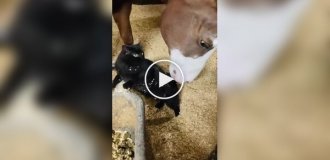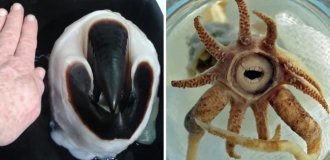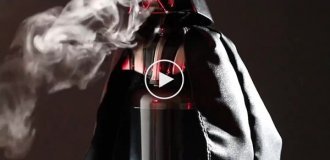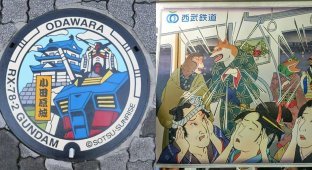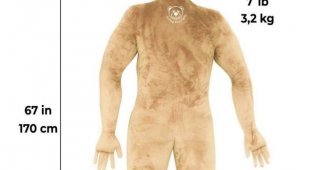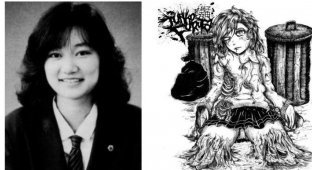Yakuza. History of Japanese crime families. Interesting facts (5 photos + 1 video)
Hi all!
Japan is a country of modern technology, old traditions and at the same time the homeland of the largest and oldest mafia group on the planet. A centuries-old culture that began with the ancient warriors of the 18th century has grown into underground criminal gangs that secretly control almost all areas of Japanese activity. Starting from cinema and ending with private companies. 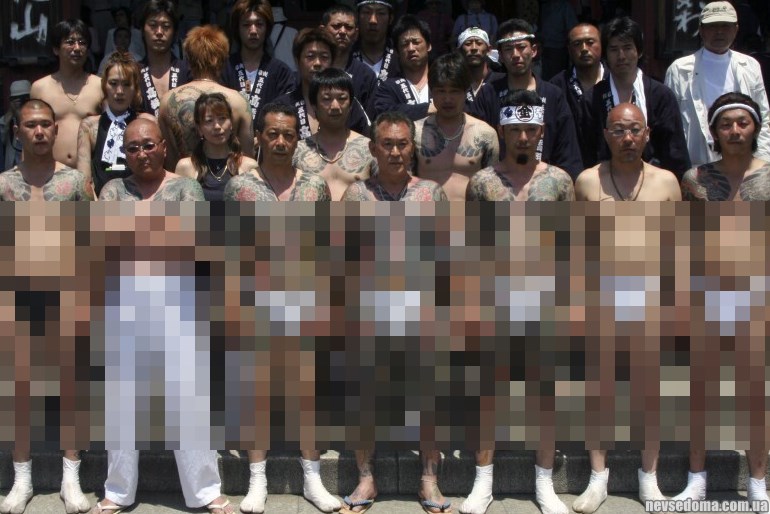
Meet the Yakuza. 

Racketeering, robbery, drug trafficking, money laundering and gambling - a business that not only brought in fabulous money, but was also untouched by the authorities and law enforcement officers.
The Yakuza did not pay taxes; there were no laws or restrictions for them. In the 80s, the yakuza extracted money from the Japanese automobile companies Mitsubishi Motors and Isuzu, and controlled airlines, energy companies and metallurgical plants. The mafia was literally swimming in money.
Yakuza is the way of the warrior and the code of honor. Members of these clans solved any problems that bothered people. In the 19th century, everything turned out differently. The Yakuza have turned into criminal gangs. In who they are today, noted the Yakuza journalist and researcher.
But the strong alliance between the criminal and legal worlds gradually began to fall apart - the mafia activities of the Yakuza crossed the boundaries of what was permitted. In the late 80s, large-scale wars between clans, namely the murders of gang leaders, the liquidation of witnesses and ruthless racketeering led to a cooling of relations between the mafia and the government elite. Massive police raids on Yakuza members began. In the 90s, anti-mafia laws appeared that hit the clans’ main sources of income.
Tighter laws led to the fact that more than 184 thousand gang members, who simply ruled their territories without limit in the 60s, were now forced to sit underground, and their number decreased to 34,500 in 2017. Traditional business was replaced by new approaches: the yakuza rob, blackmail and even resort to cyber attacks on Japanese banks.
How powerful do you think the Yakuza syndicate is today? More than 2500 groups! Everyone is controlled by 22 clans. Once upon a time, the largest and most authoritative family was the Yamaguchi-gumi family. There were more than 23 thousand people in their ranks. The clan gained its authority in the war for Osaka, one of the richest cities in Japan. Bars, brothels, bathhouses and drug dens. Control over such a Japanese “cuisine” meant wealth, supremacy and authority in the country’s criminal world.
In 1960, hundreds of Yamaguchi-gumi members surrounded areas of the city and knocked out dozens of opponents from enemy clans in their path.
But in 2015, due to a conflict of interests, the clan was divided into 3 factions, the 20-thousand-strong gang disintegrated, forming 2 more, no less influential:
1. Kobe Yamaguchi-gumi
2. Ninke Yamaguchi-gumi
3. They are followed by other families: Sumiyoshi-kai and Inagawa-kai.
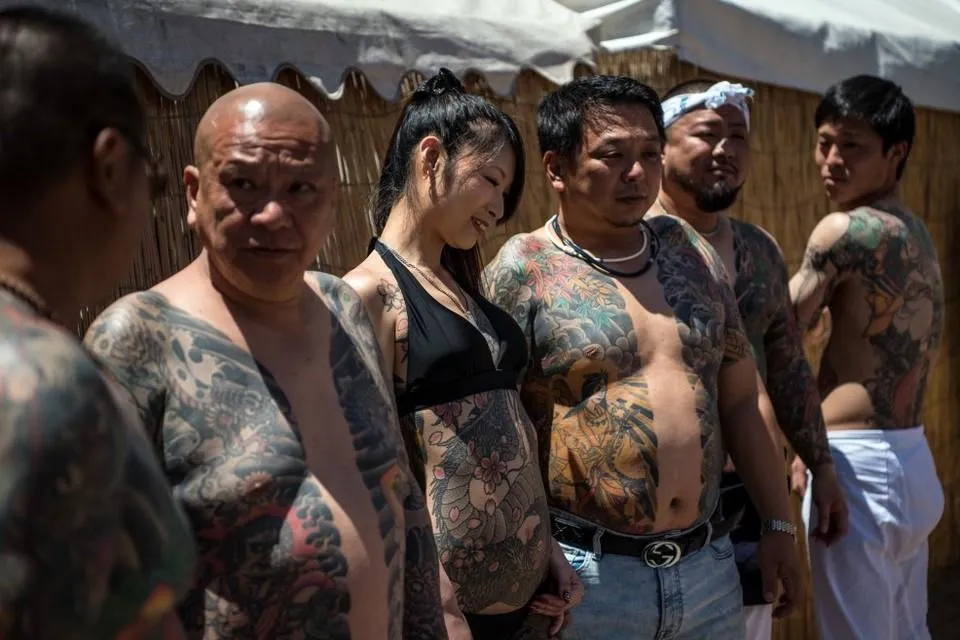
Unlike other criminal groups, the Yakuza has still retained traditions and a strict hierarchical order. Each clan is a separate family, where rules are paramount. The leader of the clan is oyabun, adopted father in translation, and his subordinates are kobun (adopted son). Each kobun in the family has his own responsibilities, but the youngest have the most of them.
I've been in the clan for 7 years now. At 8 am I start making breakfast for the boss, then I clean up and do whatever the oyabun wants me to do. “He is the meaning of my life, and if necessary, I will sacrifice myself for him,” said one of the younger yakuza.
The discipline is inviolable and is called the code of honor. Whoever violated it must apologize. But the word “sorry” does not exist in Yakuza culture. The culprit must pay for his mistakes. No, not with money. The phalanx of your own little finger. This type of "apology" is called Yubitsume. An unusual apology is used in two cases: if one of the members wants to leave the gang, the second - failure to complete the task.
The culprit must independently cut off or bite off his phalanx and bring it to the boss (Oyabun). Only after the head of the clan forgives can you go to the hospital.
Historically, such a procedure was shameful. The warrior who did not have the phalanx of the little finger no longer held the sword so tightly in his hands. Today, it is more of a formal punishment, which is present in almost every yakuza clan.
The same anti-mafia lawsprohibit members of the yakuza from getting jobs, receiving health insurance and social benefits. Therefore, in order to prevent companies from finding out about criminal connections, the yakuza wear silicone prosthetics, which are practically no different from a real finger.
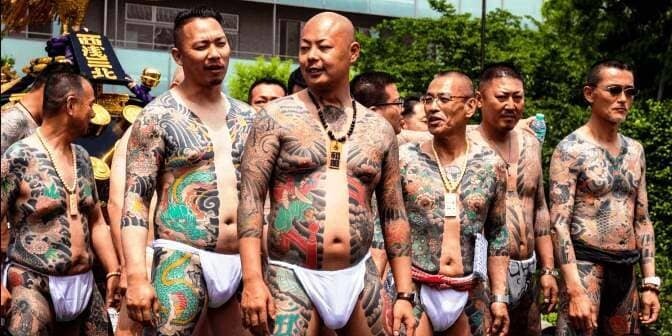
Despite the fact that everyone is afraid of the mafia, the Yakuza code prohibits them from touching civilians. And besides, the Japanese themselves know that it is not worth crossing the path of the mafia, just knowing about the clan wars is enough - the desire disappears by itself. The same Yamaguchi-gumi split caused more than three hundred clashes between clans throughout the country, with about a hundred people killed, mostly members of the yakuza.
However, there are still crimes. In 2018, according to the Japanese police, 17 thousand crimes related to representatives of the mafia were registered in the country. These are robberies, blackmail, clashes between sea otters and financial fraud.
We don't kill for nothing. Even if someone crosses our path, we will try to come to an agreement. Do you know the difference between the foreign mafia and the Japanese one? Abroad they kill for money, we kill only when it comes to insulting honor,” said Don Tanaka, Oyabun of the Matsuba-kai clan.
Each criminal group in the world has its own special marks. But none of them can be as easily identified as the yakuza. Representatives of the clans have their entire bodies covered in tattoos. At the same time, each fragment is filled by hand, and not with tattoo machines. This technique is called Tebori. This is hundreds of hours of work by a master and incredible patience on the part of a gang member. Anyone who is unable to endure the pain of the process is not worthy of being a yakuza.
Each tattoo is a separate symbol:
1. Beginners, ordinary Kobunam, get a dragon fighting a tiger - this is a symbol of success.
2. Higher mafia ranks receive tattoos based on their occupation. For example, the image of a black carp means complete devotion to the clan.
3. The mythical strongman Kintaro is stuffed by killers who are fluent in martial arts.
4. Demon They are worn by those who collect debts.
5. Deity Fudo is a symbol of smuggling and drugs.
6. But on the chest there is usually a circle in which there is an image of a particular clan.
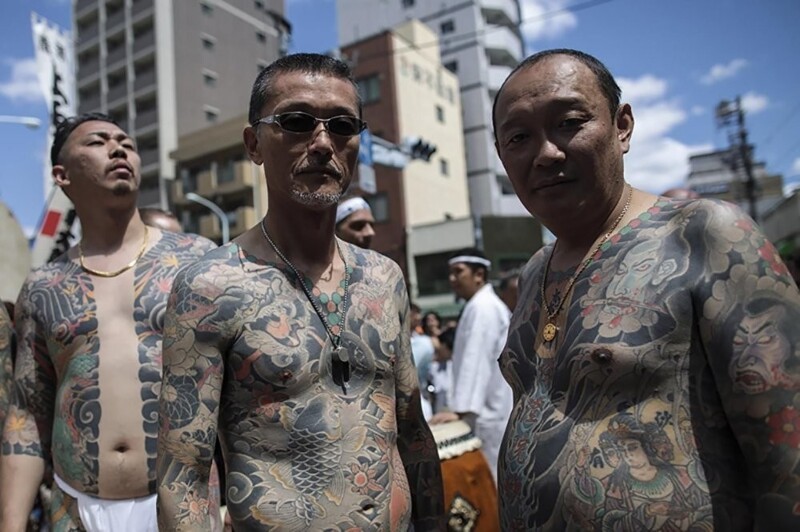
Despite the strict attitude of the authorities towards gangs, the ranks of the Yakuza are constantly growing. As a rule, young people join clans, bypassing such a link as the university, they try to earn easy money as quickly as possible
It is very easy to take the wrong path, but not to get off.
The ritual of acceptance into one’s ranks is a shared cup of sake with oyabun. After this, there is practically no turning back. Only a few manage to escape the criminal world of the Yakuza, but in doing so they lose the phalanx of their little finger.
Some of the yakuza try to wash their hands stained with the blood of others with noble deeds. Thus, individual clans of criminal groups after the 2011 tsunami allocated money for the restoration of the country, helped people and provided them with everything they needed. We supplied more than 40 tons of humanitarian aid and organized relief centers for victims. But such stories about gangs that once followed the path of a warrior and helped the people are rather rare. Now these are criminals who constantly terrorize Japan.
The Yakuza have engaged in violence before. But if one of them hurts or touches a civilian, then they themselves came to the police... and repented. Today this is no longer the case. Few people adhere to the code of honor, emphasized former policeman Norio Tamura.
The current life of the Yakuza, in comparison with the permissiveness of the 80s and 90s, can rather be called survival. Every year, anti-mafia laws increasingly cut off the air for gang members. But despite this, they still find a fresh breath of air in new schemes to siphon off dirty money: they organize events, engage in clandestine gambling, steal cars and sell drugs. The largest clans are capable of earning up to 6 billion dollars a year.
It is impossible to eradicate the Yakuza completely. There is simply no law in Japan that prohibits membership in clans and gangs. The mafia is a subculture, a part of the life of the country, without which even the Japanese themselves cannot imagine themselves. “If you have your own business and you have problems here, you just call the Yakuza. And that’s it. There are no problems,” said one of the Japanese.
Japanese culture itself is thoroughly saturated with the yakuza. Especially when it comes to cinema. People like her. The films are not particularly distinguished by their quality, but regarding objectivity, it, like truthfulness, is guaranteed by the Yakuza representatives themselves.
Yakudfor is culture, tradition and strength. Phenomenon of the criminal world. Once upon a time, members of the Yakuza were warriors who followed the laws and respected the rules. Today, most of them have turned into ordinary bandits who terrorize Japan. However, among the 22 clans there are still those who respect traditions and are ready to take up the sword again.
